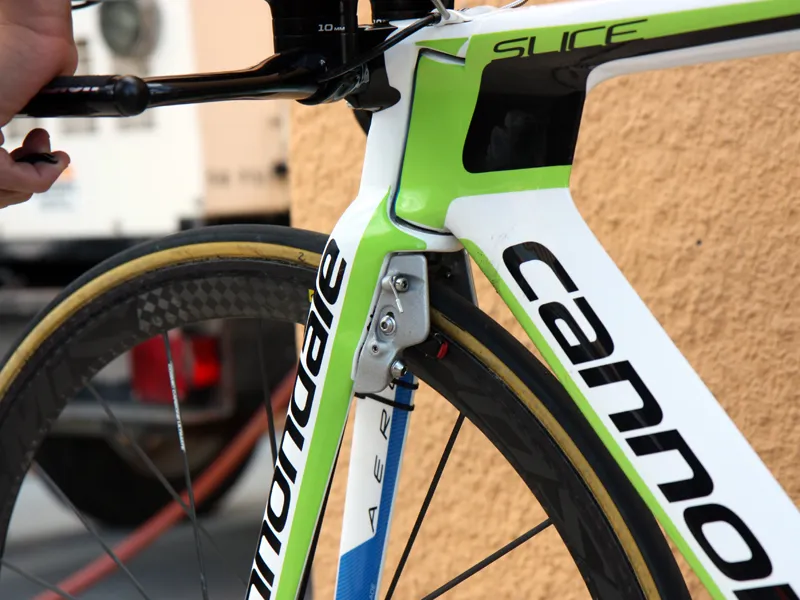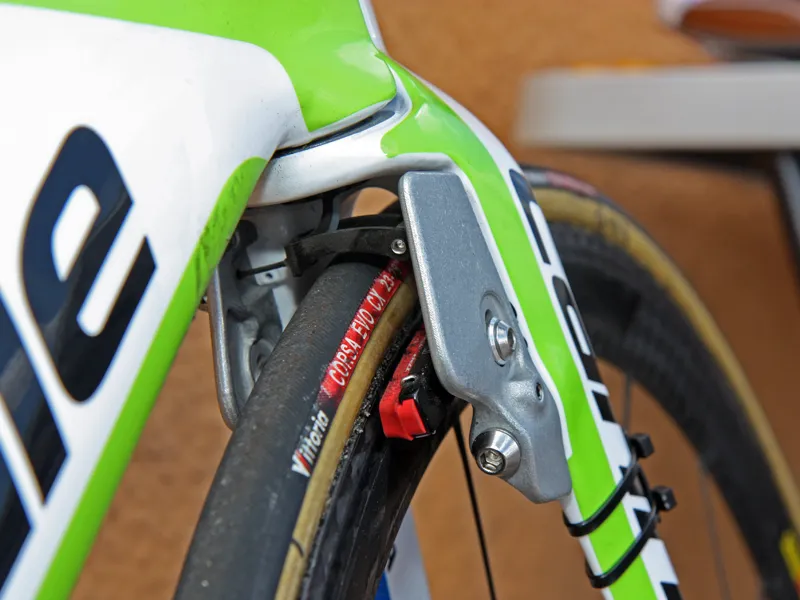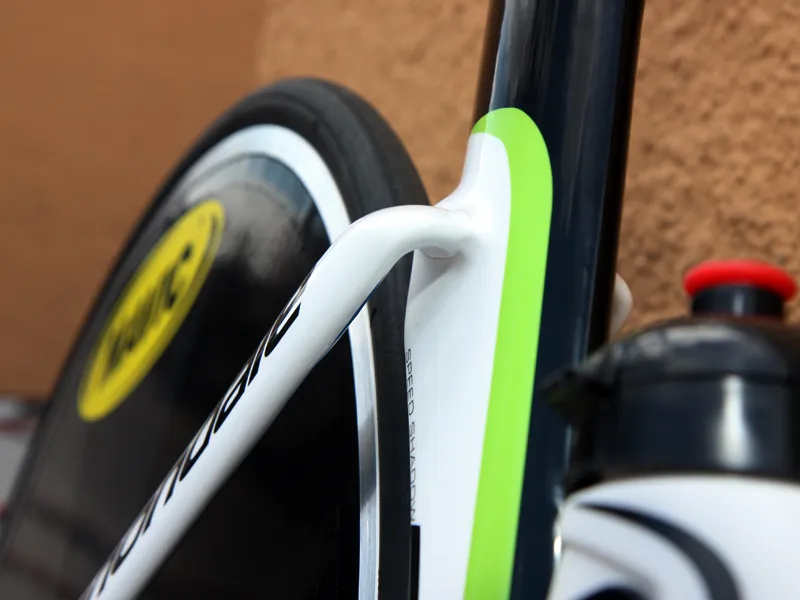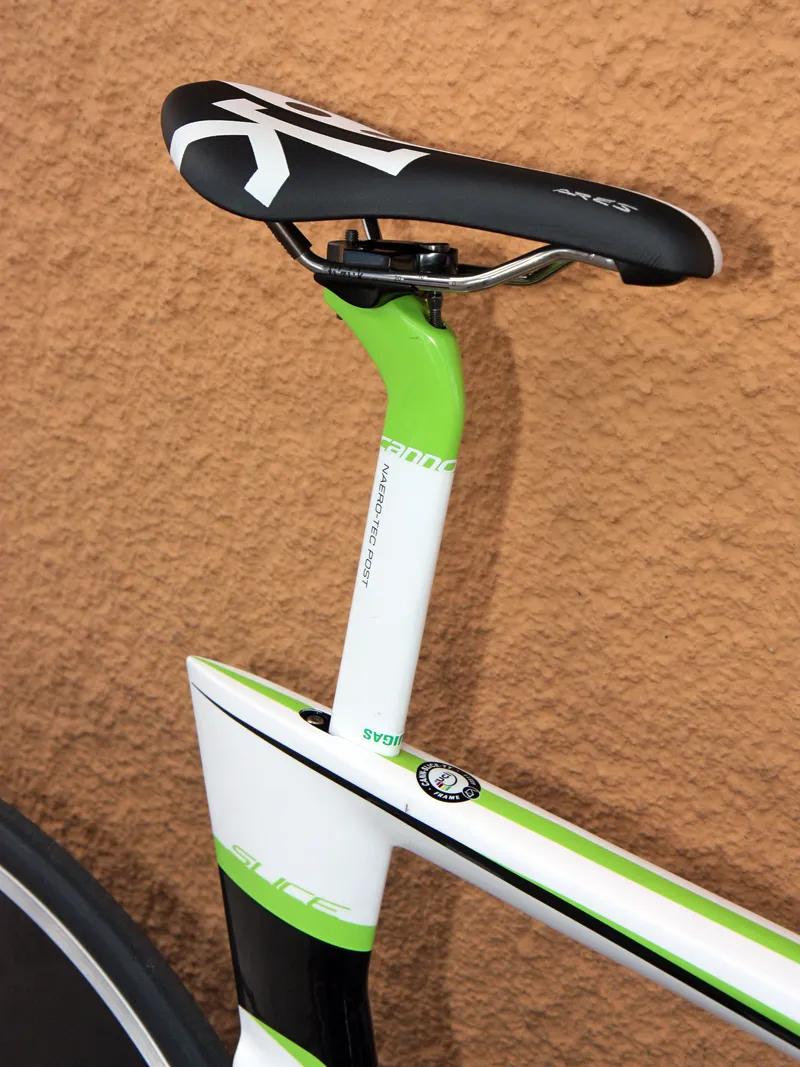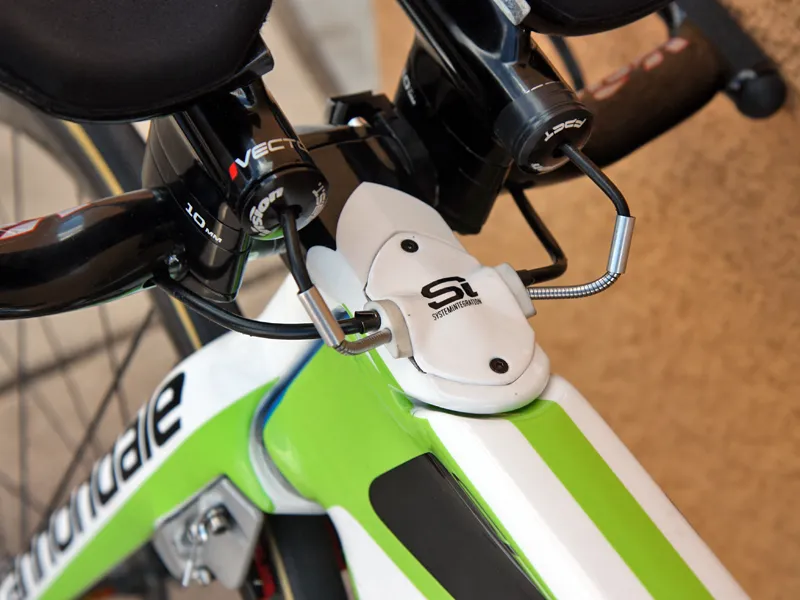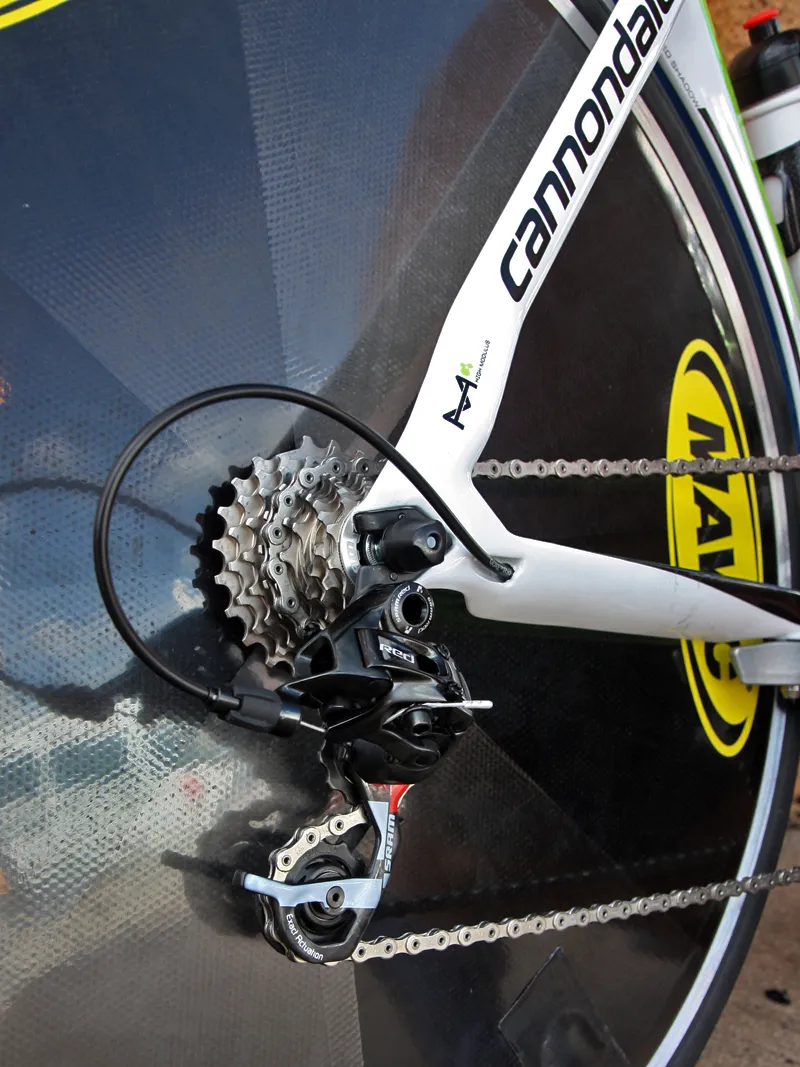Cannondale are finally set to replace their long-running Slice time trial bike with a striking new model that will piloted by Liquigas team captain Ivan Basso in today's inaugural USA Pro Cycling Challenge. A far cry from its predecessor, this latest Slice not only sports a more aggressive, angular shape but also a higher level of component integration and presumably a lower drag coefficient for faster times.
One of the biggest changes is the new external fork steerer, which is similar to those used by Felt, Look and Scott. In addition to lending additional front-end stiffness, the stouter arrangement also allows for narrower headset bearings to decrease frontal area. For the same reason, the stem now sits inline with the level top tube.
The seat tube shaping has been dramatically changed as well, with its more angular shape terminating in a curious tailcone that Cannondale will invariably claim reduces drag once more official information is released. Up top is a new "Naero-Tec Post" that is indeed very narrow but also very shallow from front to back – likely to comply with the UCI's 3:1 maximum allowable cross-section depth.
Whereas the previous Slice was starting to look decidedly yesteryear with its conventional brakes and mostly exposed cable routing, this latest version has righted that situation and then some. Both the front and rear brakes – which look to be made by TRP – are now neatly integrated and proprietary to the Slice, with the front linear-pull calipers tucked behind the fork crown and the rear arms hidden down below the chainstays just behind the bottom bracket.
Even the cable routing has been well thought out, with the front line coming down directly through the center of the steerer tube and the rear sprouting out the center of the down tube. Speaking of routing, Cannondale's engineers have devised a novel setup up on top of the fork with all four control lines feeding into a sort of steerer cap 'hub'.
We were unable to get a response from Cannondale officials before this was published so exactly how the cables are routed underneath is still a mystery but the setup leaves minimal housing exposed – and what does reside outside the frame is hidden behind the aerobars so there should be negligible aero cost. All of these short sections of housing rotate with the bars so while mechanics need to trim the lines carefully, they don't have to leave any excess to account for turning.
We weren't able to get a frameset weight from the Liquigas mechanics but Basso's complete Slice as pictured here was 8.92kg (19.67lb) – hardly considered svelte and curiously, exactly the same weight as his 2009 setup. However, Basso's latest rig was fitted with a clincher Mavic disc rear wheel and steel spindles in his Speedplay Zero pedals so we expect the full-blown race version to be a bit lighter. If this new Slice is as big an improvement in terms of aerodynamics as it appears, the weight won't matter much anyway.



